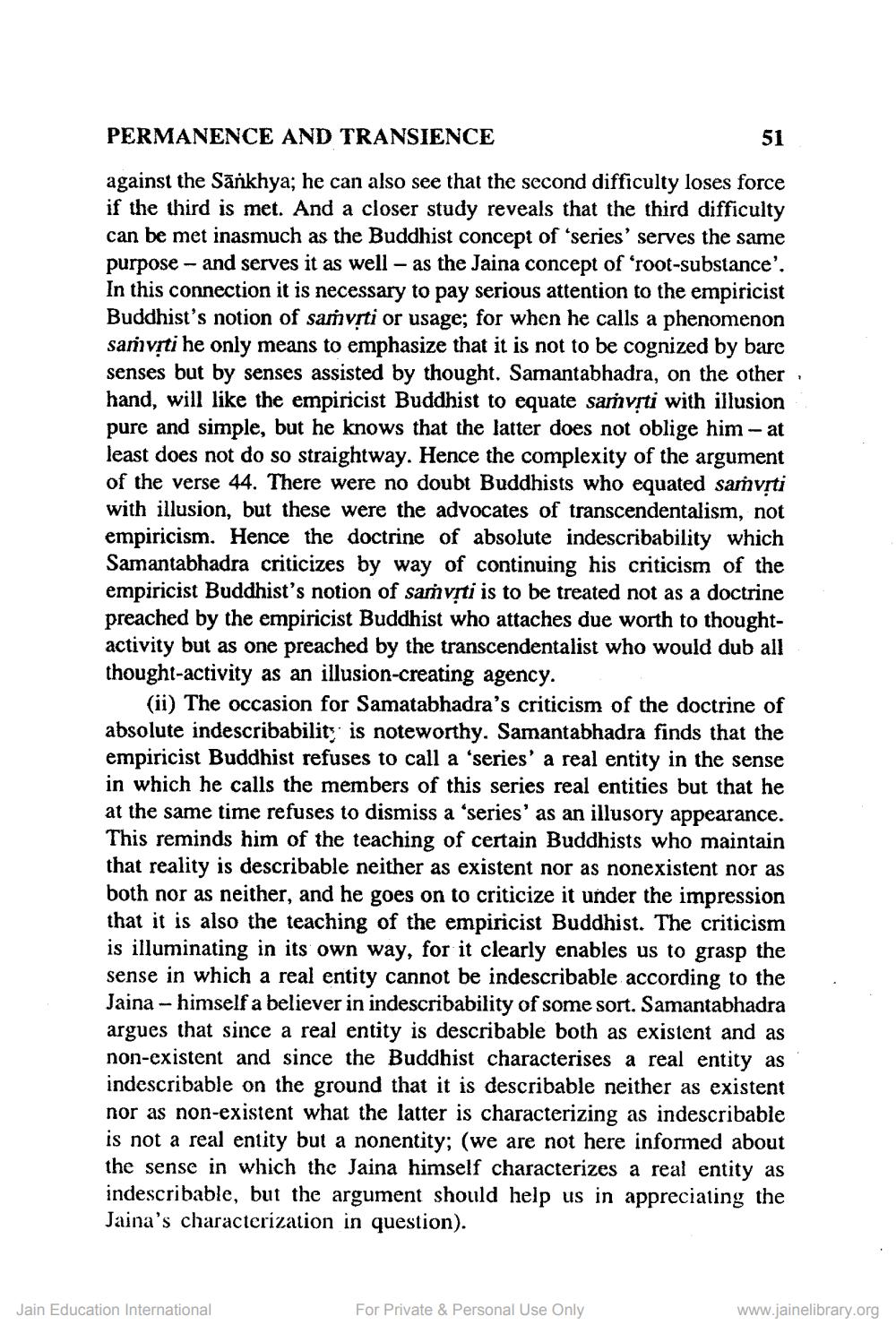________________
PERMANENCE AND TRANSIENCE
51
against the Sankhya; he can also see that the second difficulty loses force if the third is met. And a closer study reveals that the third difficulty can be met inasmuch as the Buddhist concept of 'series' serves the same purpose - and serves it as well - as the Jaina concept of 'root-substance'. In this connection it is necessary to pay serious attention to the empiricist Buddhist's notion of samvrti or usage; for when he calls a phenomenon samvrti he only means to emphasize that it is not to be cognized by bare senses but by senses assisted by thought. Samantabhadra, on the other hand, will like the empiricist Buddhist to equate saṁvrti with illusion, pure and simple, but he knows that the latter does not oblige him - at least does not do so straightway. Hence the complexity of the argument of the verse 44. There were no doubt Buddhists who equated sarvrti with illusion, but these were the advocates of transcendentalism, not empiricism. Hence the doctrine of absolute indescribability which Samantabhadra criticizes by way of continuing his criticism of the empiricist Buddhist's notion of samvrti is to be treated not as a doctrine preached by the empiricist Buddhist who attaches due worth to thoughtactivity but as one preached by the transcendentalist who would dub all thought-activity as an illusion-creating agency.
(ii) The occasion for Samatabhadra's criticism of the doctrine of absolute indescribability is noteworthy. Samantabhadra finds that the empiricist Buddhist refuses to call a 'series' a real entity in the sense in which he calls the members of this series real entities but that he at the same time refuses to dismiss a 'series' as an illusory appearance. This reminds him of the teaching of certain Buddhists who maintain that reality is describable neither as existent nor as nonexistent nor as both nor as neither, and he goes on to criticize it under the impression that it is also the teaching of the empiricist Buddhist. The criticism is illuminating in its own way, for it clearly enables us to grasp the sense in which a real entity cannot be indescribable according to the Jaina - himself a believer in indescribability of some sort. Samantabhadra argues that since a real entity is describable both as existent and as non-existent and since the Buddhist characterises a real entity as indescribable on the ground that it is describable neither as existent nor as non-existent what the latter is characterizing as indescribable is not a real entity but a nonentity; (we are not here informed about the sense in which the Jaina himself characterizes a real entity as indescribable, but the argument should help us in appreciating the Jaina's characterization in question).
Jain Education International
For Private & Personal Use Only
www.jainelibrary.org




